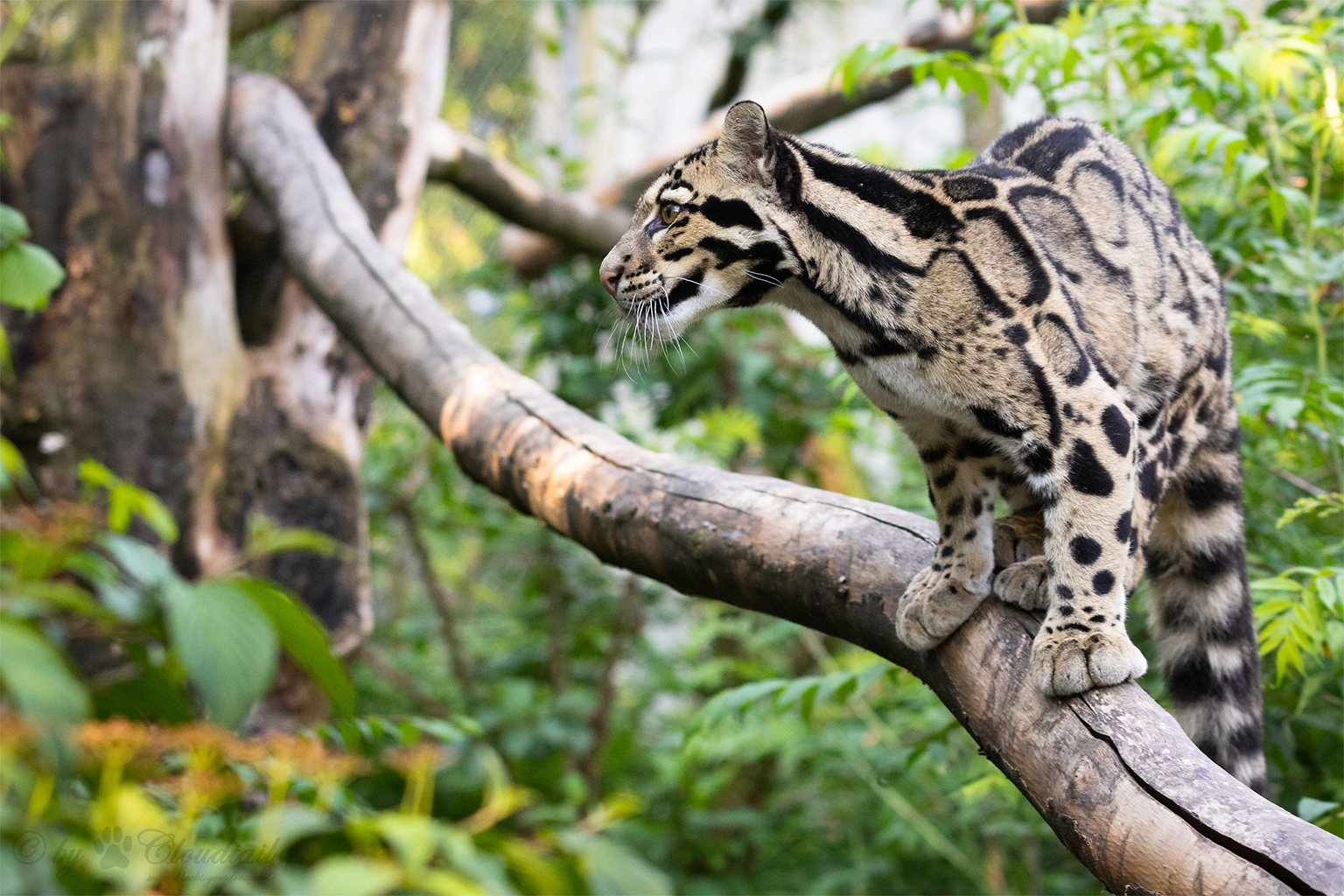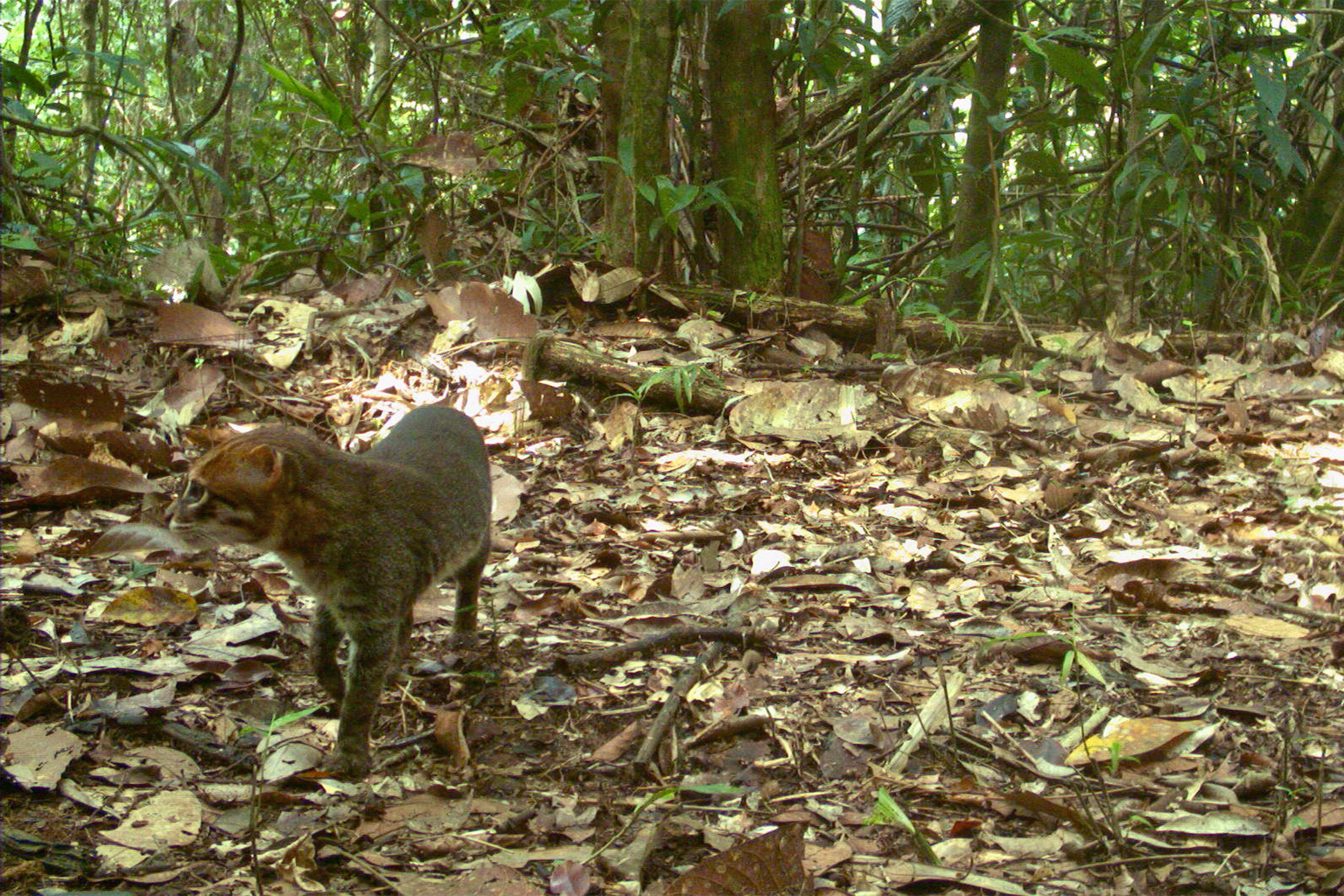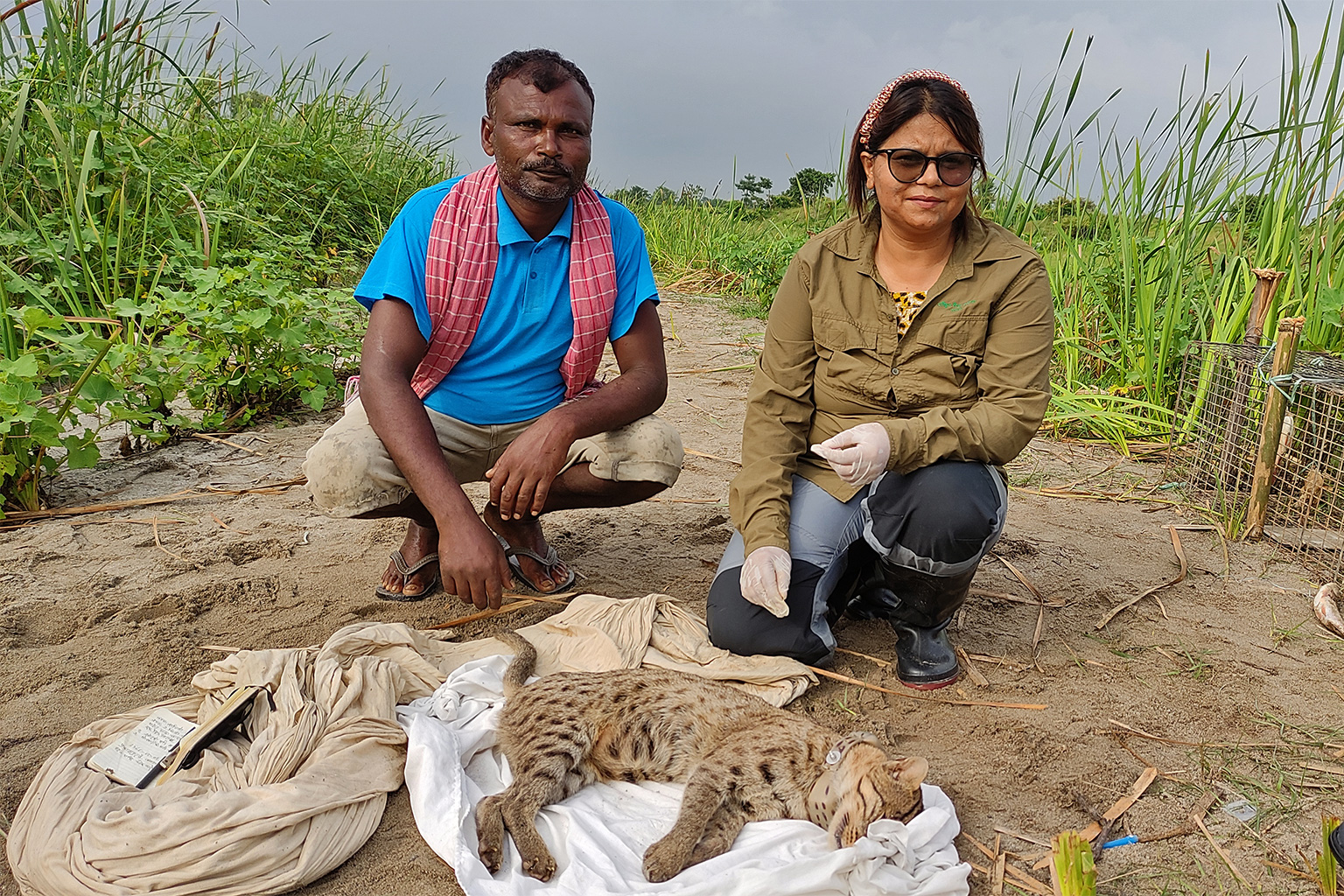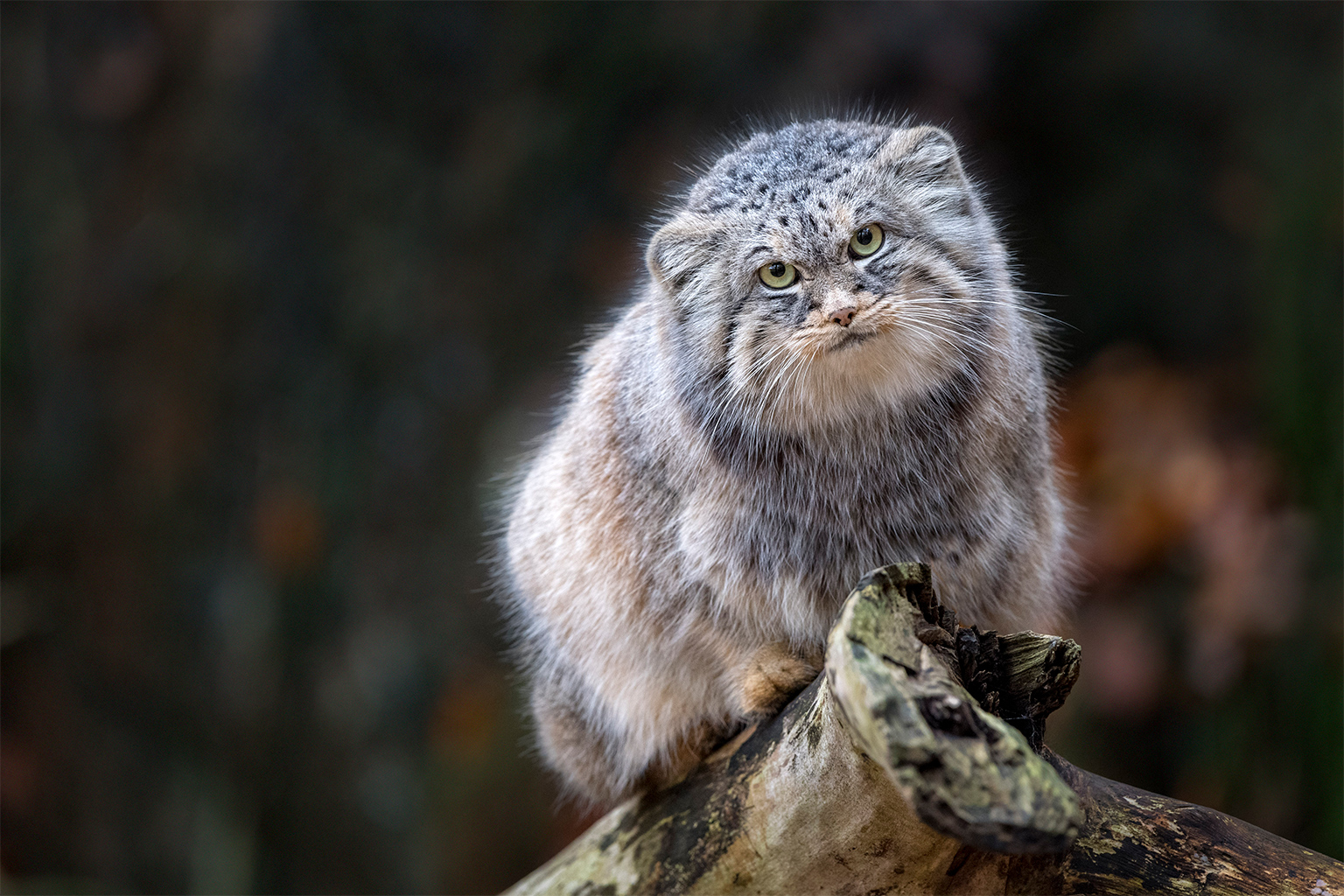- Around the world, there are 33 species of small wild cat that often fly under the conservation and funding radar. Out of sight, and out of mind, some of these species face the risk of extreme population declines and extinction.
- But small cat species are reclusive and notoriously difficult to study. In some cases, basic ecological knowledge is lacking, hindering conservation efforts. Their failure to garner the public attention achieved by the more charismatic big cats has left small cat research severely underfunded.
- These species, many of them habitat specialists with narrow ecological niches, face a wide array of threats including habitat degradation and loss, poaching, human-wildlife conflict, and increasingly, pollution and climate change.
- Despite these global challenges, many conservationists and researchers, hampered by low funding, are fighting to conserve small cats by partnering with traditional communities to build public awareness and reduce immediate threats.
When we think of mammals at risk, the big cats of the Felidae family — especially the tiger or snow leopard — may jump to mind. But few will think of one of the 33 species of small cats. Fewer still might recognize these species of the Felinae subfamily or be able to name them.
Scattered across diverse ecosystems around the world, the small cats are overshadowed by their charismatic cousins, the big cats of the Panthera genus. But they face similar deepening threats from biodiversity loss, land-system change, pollution, and climate change — four planetary boundaries that humanity has dangerously overshot, putting our world’s “safe operating space” in peril.
Small cats are often habitat specialists, ideally adapted to where they live, which puts them at particular risk. They are also experts at evading researchers, leaving much to be discovered about them, and often frustrating conservation efforts. Currently, 14 of the 33 small cat species are listed as vulnerable or endangered on the IUCN Red List. Seven of them are found in Asia.

Small cats under pressure from Asia to Latin America
Following an international Small Wild Cat Conservation Summit in 2019, researchers and conservationists delineated the primary threats to small cats: habitat loss and degradation, human-small wild cat conflict, hunting and poaching, and vehicle collisions topped the list. Little has changed since then.
“In Asia, the biggest threats facing small cats would be direct killing, whether that’s through human-wildlife conflicts, or poaching, as well as habitat loss, habitat degradation and land use change,” says Wai-Ming Wong, small cats program director for Panthera, the global wild cat conservation organization.
Habitat change and loss are diminishing territory, bringing cats into closer contact with humans, giving access to poachers, or heightening risk of human-cat conflict, he adds. Continued expansion of monoculture agriculture, including tree plantations that produce palm oil or paper, are among the major drivers of land-use change.
Wong cites a case in point: Agarwood, also known as gaharu wood, in Sabah, Malaysia, on the island of Borneo. Trade in this fragrant wood, used to make incense and perfumes, has pushed some species of the Aquilaria family of trees from which it’s sourced to the point of extinction. But that trade, and the loss of those trees, is also threatening the island’s small cats.
“What we’re finding is that we have groups of people going into the forest to harvest gaharu,” Wong says. And while the major threat to Sabah’s small cats is bycatch and prey depletion, “If they see a wild cat they’ll kill it.”
Between 2004 and 2017, Borneo lost around 5.8 million hectares (14.3 million acres) of forest, according to a report by WWF, putting felids at serious risk. The island is home to five species of small cat. Two of those — the flat-headed cat (Prionailurus planiceps) and the bay cat (Catopuma badia) — are listed as endangered by the IUCN. The former, a wetland specialist, is already believed to have lost around 70% of its historically suitable habitat across its range, which extends across Southeast Asia.


The other, the bay cat, is perhaps the world’s most endangered small cat, according to Wong. In part, this is because it remains so enigmatic. “We just know nothing about this species,” he adds. “It’s a wild cat that is facing a lot of threats. But at the same time, it’s very difficult to study in the wild.” Facing such limited knowledge, formulating effective conservation strategies proves challenging.
Another habitat specialist, Southeast Asia’s Felis chaus fulvidina, a subspecies of the jungle cat, is imperiled by regional extinction. It’s a specialist of the tropical lowland deciduous and dipterocarp forest, one of Southeast Asia’s most threatened forest types.
F. c. fulvidina is one of the rarest of all felids and could probably qualify as endangered, says Susana Rostro-García of the Wildlife Conservation Research Unit (WildCRU) at the University of Oxford. But, as with other small cats, not enough is known to pinpoint threats across the cat’s range, she says, though habitat loss and an ongoing snaring crisis are considered primary threats.
“Without urgent and increased protection of this habitat, which is subject to forest loss and poaching, the species could soon be extirpated from the region,” says Rostro-García. “The status of the jungle cat in the Southeast Asian region is becoming increasingly bleak.”
On the other side of the globe, human encroachment is bringing new threats to Mexico’s small cats, especially the ocelot (Leopardus pardalis) and margay (Leopardus wiedii), both nationally endangered. A pervasive yet under recognized danger in protected areas are dogs, says Mariam Weston Flores, co-leader of the Small Wild Cat Conservation Foundation’s Ocelot Working Group and project coordinator at Animal Karma Foundation, an NGO.
Dogs disturb the small cats, causing them to abandon their territories; canines also can spread disease. Whether dogs are killing Mexico’s cats has not been fully confirmed, she adds, but “I feel like we should highlight the fact that invasive species, especially dogs, are a recurrent threat in several protected areas, and are not acknowledged at all.”


Losing wetland and mountain habitat
Wetlands are one of the world’s most threatened ecosystems, with 35% lost globally since 1970; they’re disappearing three times faster than forests, posing escalating risks for cat species that specialize there. In Nepal, the wetlands-loving fishing cat (Prionailurus viverrinus) is endangered. Confined to the western Terai region, it’s thought to exist in only five protected areas, maybe numbering 200 mature individuals — fewer than the estimated number of tigers in Nepal.
“I think for the fishing cat, humans are the main threat,” says Rama Mishra, a Ph.D. candidate at the University of Antwerp and co-founder of the Wildlife Conservation Association Nepal.
Mishra was part of a team that mapped suitable fishing cat habitat in the country. They found approximately 668,000 hectares (1.65 million acres) — 4.4% of Nepal’s land — to be suitable. But nearly two-thirds of this 4.4% lies outside conserved areas; though encouragingly, a portion of “highly suitable” habitat falls inside conserved areas.

Conversion of Nepali wetlands into croplands and fishponds has brought the fishing cat into conflict with both farmers and fishers. “When the fishing cat is [discovered] moving around the ponds, there is always a threat from the fish farmers,” Mishra says. “They think the fishing cat will kill and consume their fish.”
However, some cats are adapting to their rapidly changing environment. In Sri Lanka, for example, fishing cats are spending more time in cities, says Anya Ratnayaka of the Urban Fishing Cat Conservation Project. “We have some cats that have their home ranges within [Colombo] city limits,” she explains. While the adaptability of these cats sounds positive, it raises concerns they could find themselves in what Ratnayaka describes as an “ecological trap.”
“The negative impacts [of living among humans] — disease, persecution, roadkill — far outweigh the ‘positive’ impacts,” she explains. “We aren’t sure how long our cats will survive in Colombo’s urban landscape, especially if urban wetlands are not properly maintained, and the city’s green spaces are cleared for concrete.” According to some estimates, Colombo is losing its urban wetlands at a rate of 1.2% per year; 40% of its wetlands were lost in the past 30 years alone.

Muddying the waters
While conservationists are familiar with imminent small cat threats such as hunting, new perils loom that are poorly understood. This year, for example, the Stockholm Resilience Centre announced that the world has surpassed the safe Earth operating space for the release of “novel entities” into the environment. Urban and industrial wastewater pollution and agricultural runoff are among the sources of a spreading toxic cocktail of chemicals and other contaminants such as nitrogen and phosphorous into rivers, lakes and coastal waters, presenting threats to biodiversity.
For example, because Borneo’s flat-headed cat lives on a diet of fish, crustaceans and frogs, the pollution of freshwater sources is likely having some impact on the species, says Wong. A 2014 study found that oil palm plantations can severely degrade nearby freshwater system quality, introducing chemicals, raising temperatures and increasing sedimentation. Illegal gold mining has led to mercury poisoning in Borneo’s rivers, polluting drinking water and leading to bioaccumulation in fish. No study has measured these toxic impacts specifically on small cat species, says Susan Cheyne, co-director of the Borneo Nature Foundation. But since fish-consuming humans are already being adversely affected, “if the cats are consuming the same fish, there has to be some sort of similar impact.”
In Sri Lanka, the fishing cat is also being exposed to pollution from wastewater, agricultural runoff, along with plastics. “We see countless freshwater wetland bird species ingesting plastics. You’ve got fishing cats who are eating all of these,” Ratnayaka explains. Mishra in Nepal says she has found glass and plastic in the scat of fishing cats.
Ratnayaka notes a study carried out in South Africa that found bioaccumulation of anticoagulant rodenticides in caracals (Caracal caracal), a medium sized wild cat, along with other carnivores living in the Greater Cape Town region. How similar pollution is impacting fishing cat populations, particularly those close to urban areas, hasn’t been studied. “But I do think there has to be some negative effect going on, whether it’s a physiological thing or something a bit more obvious,” Ratnayaka says.


New threat on the horizon
Experts say climate change is a looming threat for the small cats — especially wetland specialist species. “As the [coastal] water level increases, a lot of the habitat for them is going to disappear,” says Wong. Species living at higher elevation are also expected to suffer habitat reductions as the world warms and mountain-adapted species move to ever higher altitudes.
The Pallas’s cat (Otocolobus manul), also known as the manul, is a widely dispersed small cat ranging over semi-arid grasslands and mountainous steppe from Mongolia to Iran. Currently considered as being of least concern on the IUCN Red List, its habitat is already highly fragmented, raising the possibility of future local or regional extinctions.
How climate change may impact the Pallas’s cat is still unclear, says Emma Nygren, project coordinator of the Pallas’s Cat International Conservation Alliance (PICA). But it could lead to further fragmentation, reductions in prey, and increased land-use change, compounding species threats. “We don’t know the effects climate change will have, we can only assume certain things,” Nygren states.
In Latin America, a changing climate threatens the survival of the endangered Andean mountain cat (Leopardus jacobita). Rocio Palacios, project leader of the Andean Cat Alliance (AGA), describes this species (with its long bushy tail to help it traverse steep rocky slopes), as the “snow leopard of the Andes.” Found in mountainous Argentina, Bolivia, Peru and Chile, it potentially faces a drastic reduction in habitat due to a warming world.
A 2017 paper estimated that the Andean cat could lose up to 30% of its range by 2080. But the issue with that study, says Palacios, is it didn’t fully account for changes in climate across the whole species range, particularly in Patagonia, which was seen as a new potential habitat in which the cat could thrive. “The [climate] projections are bad in all the distribution of the species,” she warns.
“We need to understand how climate change will really affect [the Andean cat] to see if there’s anything we can do, so we can start doing it now,” she adds. “For us, the action part is even more important than the scientific part at this particular point.”
Currently, Palacios and her team are working to reduce more imminent pressures — a storm of threats that includes retaliatory killings, extractive industry habitat degradation, and predation by dogs.

Know a cat, conserve a cat
Cat conservationists and researchers interviewed for this article raised common concerns across the globe: a lack of funding, low public awareness, and limited knowledge of the species themselves. Last year, small cats received a boost as Panthera announced plans to prioritize small cat research and conservation, backed by funding. But while spending on small cats is increasing, they still garner a meager amount compared to their larger cousins. That funding gap is especially challenging for species with lower global threat level statuses, but which are endangered at the national or regional level.
Despite the lack of money, small cat advocates continue focusing on multiple immediate threats. The Small Wild Cat Conservation Foundation (SWCCF) has set up working groups for several small cat species (among them the Fishing Cat Conservation Alliance), with more planned. Such platforms give small cat experts a place to collaborate, share information and resources, and find solutions.
“There are existential threats [such as climate change] that we can’t do very much about, and we know that,” says Jim Sanderson, founder and director of the SWCCF. “But those threats we can do something about are the ones we’re attacking.”
A central SWCCF strategy, one common to other small cat organizations, is community outreach: raising public awareness to foster understanding and cooperation, while limiting human-wildlife conflict and retaliatory killings.
“Community engagement is key for conservation, because without having [local people] on [our] side, conservation is never going to work,” says Wong. Building community partnerships and awareness — especially engaging children — is a strategy that can be practiced on a tight budget with good results.

Emphasizing this point, Mishra tells the story of Gulabi and Gulabi, who both live on the border of Nepal’s Koshi Tappu Wildlife Reserve. The former Gulabi is a fish farmer, the latter a fishing cat — the first female collared as part of Mishra’s research project. The scientist named the cat after fish farmer Gulabi to help soften community opinion toward these small predators and to build public interest.
But the radio-collared animal, instead of returning to the reserve as expected, moved between communities, and Mishra feared the fishing cat would end up dead. “I had heard that in Thailand … most of the cats were killed by the community,” she recalls.
But two months later, when Gulabi the cat was cornered in a rice paddy water pipe, the community mobilized to help: “A fisherman saw the fishing cat trapped. The person informed my team and within two hours it was rescued,” she says. “It’s the knowledge of our awareness campaign that protected the fishing cat.
“When people [get to] know this species, then they are positive toward its conservation,” Mishra concludes.
Banner image: Camera trap image of the endangered Andean mountain cat in Argentina. There are an estimated 1,300 Andean cats across fragmented habitats in Argentina, Bolivia, Chile and Peru. In addition to climate change, disturbance of its habitat due to extractive industries, retaliatory killings, and the emerging threat of feral dogs, threaten the species in the wild, says AGA’s Rocio Palacios. Image © Cristian Sepulveda.
Citations:
Mugerwa, B., Adhya, T., Ratnayaka, A., Thudugala, A., Napolitano, C., Sanderson, J., … Serieys, L. E. (2020). Are we doing enough to protect the world’s small wild cats? Cat News, 71, 42-47. Retrieved from https://www.researchgate.net/publication/342477131_Are_we_doing_enough_to_protect_the_World’s_small_wild_cats
Rostro‐García, S., Kamler, J. F., Minge, C., Caragiulo, A., Crouthers, R., Groenenberg, M., … Macdonald, D. W. (2021). Small cats in big trouble? Diet, activity, and habitat use of jungle cats and leopard cats in threatened dry deciduous forests, Cambodia. Ecology and Evolution, 11(9), 4205-4217. doi:10.1002/ece3.7316
Mishra, R., Iongh, H. D., Leirs, H., Lamichhane, B. R., Subedi, N., & Kolipaka, S. (2021). Predicting the distribution of vulnerable fishing cat Prionailurus viverrinus in Nepal. Authorea. doi:10.22541/au.163250122.21120276/v1
Carlson, K. M., Curran, L. M., Ponette-González, A. G., Ratnasari, D., Ruspita, Lisnawati, N., … Raymond, P. A. (2014). Influence of watershed-climate interactions on stream temperature, sediment yield, and metabolism along a land use intensity gradient in Indonesian Borneo. Journal of Geophysical Research: Biogeosciences, 119(6), 1110-1128. doi:10.1002/2013jg002516
Serieys, L. E., Bishop, J., Okes, N., Broadfield, J., Winterton, D. J., Poppenga, R. H., … O’Riain, M. J. (2019). Widespread anticoagulant poison exposure in predators in a rapidly growing South African city. Science of the Total Environment, 666, 581-590. doi:10.1016/j.scitotenv.2019.02.122
Bennett, M., Marquet, P. A., Sillero-Zubiri, C., & Marino, J. (2017). Shifts in habitat suitability and the conservation status of the endangered Andean cat Leopardus jacobita under climate change scenarios. Oryx, 53(2), 356-367. doi:10.1017/s0030605317000503
FEEDBACK: Use this form to send a message to the author of this post. If you want to post a public comment, you can do that at the bottom of the page.
